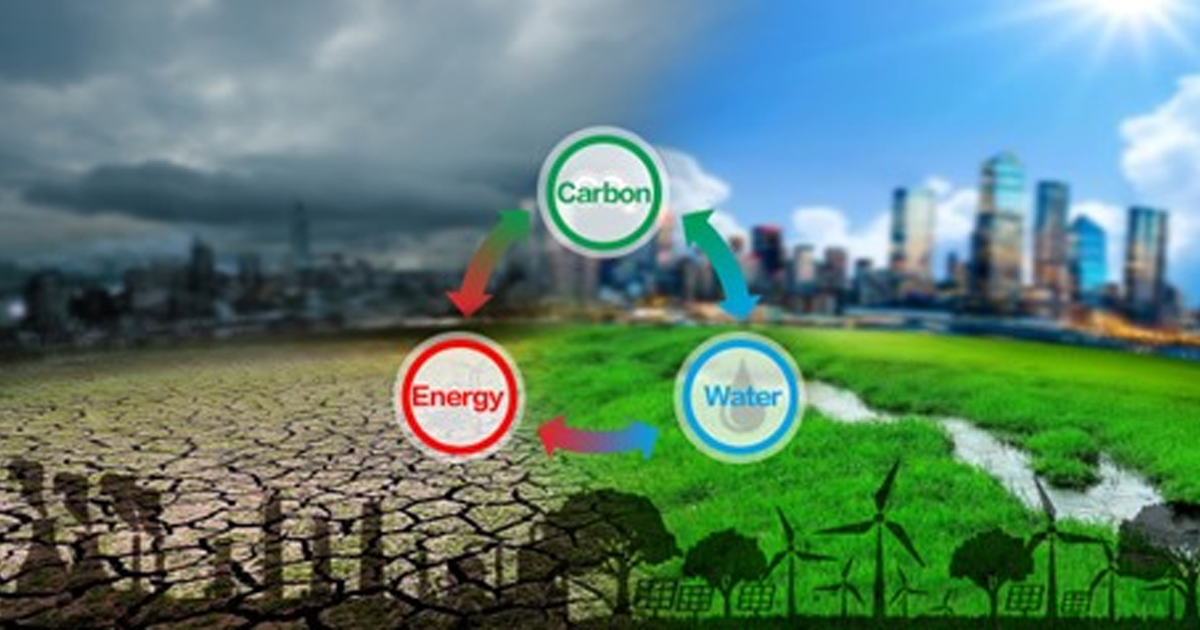Topic Editors



2. Institute of Subsurface Energy Systems, Clausthal University of Technology, 38678 Clausthal-Zellerfeld, Germany
Carbon-Energy-Water Nexus in Global Energy Transition

Topic Information
Dear Colleagues,
Climate change poses a threat to human well-being. Globally, energy production and consumption are estimated to account for more than two-thirds of greenhouse gas emissions. In aid of reducing the impact of climate change, the global energy system is undergoing a significant transition from a fossil fuel- to a green energy-based system. However, increased water and energy consumption may coincide with renewable energy development and carbon mitigation efforts. With global population growth and intensifying urban sprawl continuing to stretch the demand for energy and water resources, supplying affordable, secure, and sustainable water and energy resources is as integral to human survival as carbon mitigation. The carbon–energy–water (CEW) nexus is an interdisciplinary framework within which we can better understand the synergies and trade-offs between promoting carbon mitigation and alleviating potential water and energy security crises. We must consider the CEW nexus when formulating, at the global level, policies and strategies to promote sustainable energy transition.
This topic addresses the broader research field of the CEW nexus in global climate change mitigation efforts, with a particular focus on its role in the global energy transition. Papers of both a theoretical and an applicative nature are welcome.
Research topics may include, but should not be limited to, the following:
- CEW nexus framework and modeling;
- Global carbon mitigation efforts;
- Renewable energy transition;
- CCUS;
- Land use and land cover change;
- Remote sensing and GIS applications;
- Energy securities;
- Water securities;
- Energy storage technologies;
- Cleaner energy production methods;
- Life-cycle assessment on the CEW nexus;
- Environmental impacts of energy transition;
- Policies regarding the CEW nexus and global energy transition.
Prof. Dr. Michael Zhengmeng Hou
Dr. Faisal Mehmood
Dr. Yachen Xie
Topic Editors
Keywords
- carbon–energy–water nexus
- energy security
- water security
- carbon mitigation
- carbon neutrality
- climate change
- renewable energy
- land use and land cover change
- energy storage
- CCUS
Participating Journals
| Journal Name | Impact Factor | CiteScore | Launched Year | First Decision (median) | APC | |
|---|---|---|---|---|---|---|

Energies
|
3.2 | 5.5 | 2008 | 16.1 Days | CHF 2600 | Submit |

Environments
|
3.7 | 5.9 | 2014 | 23.7 Days | CHF 1800 | Submit |

Land
|
3.9 | 3.7 | 2012 | 14.8 Days | CHF 2600 | Submit |

Remote Sensing
|
5.0 | 7.9 | 2009 | 23 Days | CHF 2700 | Submit |

Water
|
3.4 | 5.5 | 2009 | 16.5 Days | CHF 2600 | Submit |

MDPI Topics is cooperating with Preprints.org and has built a direct connection between MDPI journals and Preprints.org. Authors are encouraged to enjoy the benefits by posting a preprint at Preprints.org prior to publication:
- Immediately share your ideas ahead of publication and establish your research priority;
- Protect your idea from being stolen with this time-stamped preprint article;
- Enhance the exposure and impact of your research;
- Receive feedback from your peers in advance;
- Have it indexed in Web of Science (Preprint Citation Index), Google Scholar, Crossref, SHARE, PrePubMed, Scilit and Europe PMC.

